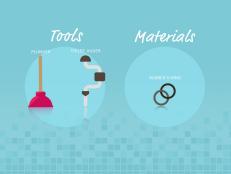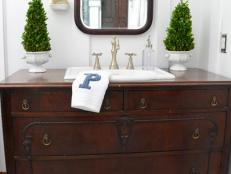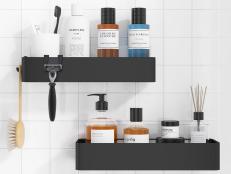The Lowdown on Low-Flow Toilets

Ever since the mid-19th century with the invention of the siphon-flush toilet — by Joseph Adamson, not, as urban legend has it, the more-famous Thomas Crapper — these handy devices have flushed in pretty much the same way: with a large, satisfying rush of up to 7 gallons of water. But that changed in the mid-'90s when water conservation laws came into effect, creating the much-dreaded "low-flow" toilet.
Flushing waste became an unsure thing when law mandated only 1.6 gallons of water per flush (GPF) be used. Toilet manufacturers changed designs enough to ensure that toilets used the requisite 1.6 gallons of water, but made no design alterations to help propel waste away — using only about half the water they previously did. That was when Americans sat up and took notice of just how efficiently — or not — their toilets disposed of waste. "Low-flow toilet" became dirty words. People clung to their old pre-1994 toilets or bought them used at garage sales.
After much consumer grousing, toilet manufacturers stepped up to the porcelain throne and made some design modifications and outright changes to the traditional method of waste disposal to make low-flow toilets more efficient. Let's be discreet and call them "high-performance" toilets. Since Adamson's invention of the siphon flush, toilets have worked pretty much the same way: gravity and atmospheric pressure push water from the tank to the bowl, then through the snake-like trapway, and off to the sewage treatment plant — if all goes well.
Gravity-assisted flushing is the term for how Adamson's invention worked; water from the tank cascades into the bowl and carries away waste. Up until about the 1930s, the toilet tank was placed high on the wall behind the toilet to maximize the water's gravitational force. Gravity works well with a lot of water, but not so well with the mandated 1.6 gallons. So today's gravity-assisted toilets often have design adjustments, such as wider flapper valves (the hole in the center bottom of the tank where the water flows down into the bowl) and trapways (the hole at the bottom of the toilet bowl). Glazing or finishing the trapway to cut down on friction and ease the way for waste is another design change.
Toto, a Japanese company that started selling toilets in the U.S. in 1989, now has about a third of the $320-million U.S. toilet market. It's gotten that slice with a better trap — a trapway, not a mousetrap. Toto's toilets (such as the Bristol) have longer and less convoluted trapways than traditional toilets, and their 3-inch (vs. 2 inches) flush valve — where the water leaves the tank — makes a big difference, too.
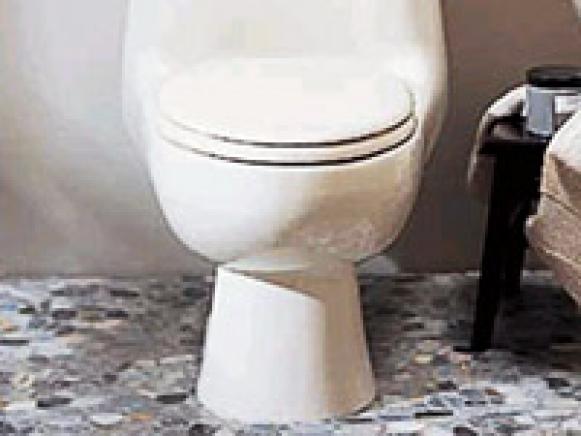
Since gravity can only do so much with so little water, pressure-assisted flush toilets use pressurized air in the tank to push the water into the bowl more forcefully, which helps to make up for the lower water amount. This type of toilet works well in disposing of waste, but it tends to be a little noisier than other types of flush toilets, sometimes needs an electrical power source, and can require more maintenance. American Standard's Fontaine is one such model.
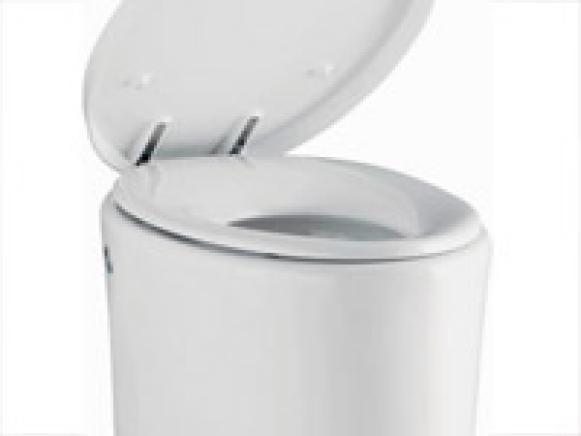
Some toilets, such as Kohler's Purist Hatbox, are revving up the flush process with a little horsepower — .2 horsepower to be precise, for the pump in the Hatbox. Its looks — a sleek, modern design that do look like Aunt Rose's Sunday hat might be nesting inside — are easy on the eyes too. Any toilet with a pump will also require an electrical power source.
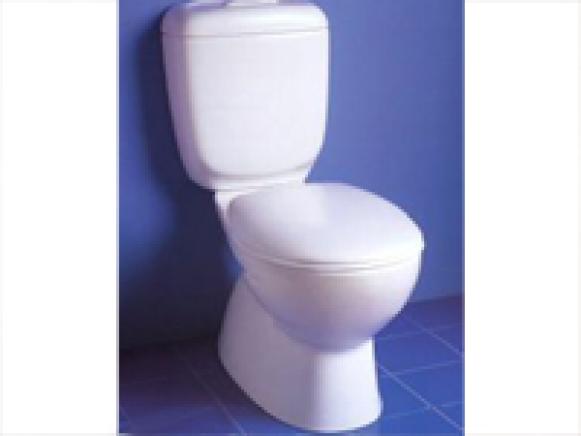
The world's driest continent — Australia — brings us dual-flush toilets, which give you a choice: push one button for flushing liquid waste (.8 gallons of water) and another for solid waste (1.6 gallons). Caroma pioneered the dual-flush system to help conserve water, but they made it efficient, too. The gaping 4-inch trapway on the Caroma helps ensure that when you go so does your waste. And although it is a gravity-assist flush system, it doesn't use the siphonic action of traditional toilets, in which waste is pulled out of the bowl after the water. Caroma uses a wash-down system: there's very little water in the deep bowl; most of it comes cascading down from the tank through the rim of the bowl.
According to water conservationist George Whalen, switching to water-saving fixtures can save you as much as $100 a year in utility costs. So low-flow toilets can be good news, especially when they work right.
Resources
Toto USA
www.totousa.com
American Standard
www.americanstandard-us.com
Kohler
www.us.kohler.com







